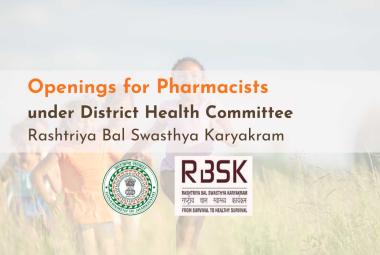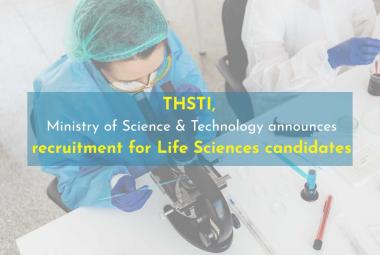{ DOWNLOAD AS PDF }
 ABOUT AUTHORS:
ABOUT AUTHORS:
Fatema Nasrin1*, Nabila Mahrin2, Nisrat Jahan1, Yesmin Begum1, Senjuti Majumder1
1Department of Pharmacy, Southeast University, Banani, Dhaka
2Pharmacology labortory, Department of Pharmacy, Southeast University, Banani, Dhaka
nasrin_0209@yahoo.com
ABSTRACT
We aimed at assessing the effect of methanolic extract of Streblus asper in human red blood cell (HRBC) membrane stabilization and insecticidal (on the stored grain pest, Trogoderma granarium Everts) as studies. The membrane stabilizing activity was assessed by using erythrocyte in hypotonic solution and heat induced was compared with acetyl salicylic acid. The extract at the doses of 200, 400 and 800 μg/ml significantly inhibited heat induced lysis of the human red blood cell membrane with values of 46.53%, 56.52% and 65.14%, respectively. The results of hypotonic solution induced lysis showed that S. asper has significant reduction (P≤0.01) in inflammation i.e. 40.8 % (400 µg/ml) and 50.8 % (800 µg/ml) as compared to the standard drug, acetyl salicylic acid, which was 62.96 % in insecticidal assay the extract showed dose dependent paralyzing effect and mortality of T. granarium Everts. All the doses of crude extracts exhibited concentration and time dependent insecticidal activity.
[adsense:336x280:8701650588]
REFERENCE ID: PHARMATUTOR-ART-2337
|
PharmaTutor (Print-ISSN: 2394 - 6679; e-ISSN: 2347 - 7881) Volume 3, Issue 6 How to cite this article: F Nasrin, N Mahrin, N Jahan, Y Begum, S Majumder; In vitro Membrane Stabilizing and Insecticidal Activities of Methanolic Extract of Streblus asper Lour; PharmaTutor; 2015; 3(6); 29-34 |
INTRODUCTION
Inflammation is a complex protective attempt by the organism to remove any injurious stimuli and initiate the healing process [1]. At the onset of an inflammation, the cells undergo activation and release inflammatory mediators: histamine, serotonin, slow reacting substances of anaphylaxis (SRS-A), prostaglandins and some plasma enzyme systems such as the complement system, the clotting system, the fibrinolytic system and the kinin system [2]. These mediator molecules work collectively to cause increased vasodilatation and permeability of blood vessels. Thus, leading to increased blood flow, exudation of plasma proteins and fluids, and migration of leukocytes, mainly neutrophils, outside the blood vessels into the injured tissues [3].
Streblus asperLour is an herbal plant that belongs to the Moraceae family. It is a small tree found in tropical countries, such as India, Sri Lanka, Malaysia, The Philippines and Thailand. Several studies reported that S. asper plant extract possess antibacterial, anti-inflammatory activities [4] and anticancer activities. In addition, S. asper extract has been traditionally used to treat wounds, skin diseases, filariasis, leprosy, toothache, fever, diarrhea, dysentery and is especially effective in the oral cavity [5-7] which has been applied in Ayurveda and folk medicines. The bark extract is used to relieve fever, dysentery, toothache and gingivitis; the branch is used as a toothbrush for strengthening teeth and gums; and the leaf exhibits insecticidal activity toward mosquito larvae, antibacterial action, inhibitory effect on oral and dental diseases and anti-oxidant activity [5,7-9]. Previously isolated constituents from S. asper include glycosides, pregnane glycoside named sioraside from roots and α-amyrin, acetate, lupeol, β-sitosterol from stem bark. Cardiac glycosides like stebloside and mansonin have also been isolated from this plant [10,11]. Stebloside has been reported for its anticancer activity on KB cell lines12. The aim of present study was to screen methanolic extracts of S. asper leaves for its insecticidal activity and anti-inflammatory activity by using an in-vitro procedure (membrane stabilising activity).
[adsense:468x15:2204050025]
Materials and Methods
Collection and extraction of plant materials
The leaves and stem of S. asper were collected in September 2013 from Mirpur, Dhaka Bangladesh and authenticated at Bangladesh National Herbarium, where a voucher specimen no DACB 37515 has been deposited.
The air-dried leaves (1kg) were finely pulverized and extracted by percolation with methanol for seven days at room temperature. The extracts were filtered and concentrated under vacuum to obtain a crude extract of S. asper.
Drugs
The active drugs Acetyl salicylic acid was a generous gift samples from Square Pharmaceuticals Ltd.
Insect
Trogoderma granarium(Everts) (Coleoptera: Dermestidae) adult and its larvae were collected from the stored grains in local market.
Blood sample
Fresh whole blood (3 ml) was collected intravenously from healthy human volunteers into heparinised tubes to prevent coagulation.
Instruments
Centrifuge machine to prepare supernatant of blood sample was used. The molecular absorption spectra and absorbance at specific wavelengths were recorded with a HACH DR 4000U UV-visible spectrophotometer equipped with quartz cells of 1-cm light path.
Assay of membrane stabilization activity
The effects of S. asper extract on haemolysis of human red blood cell (HRBC) induced by heat and distilled water was evaluated using the method of Shinde et al.[13] with some modifications.
Heat induced haemolysis
Samples of the extract used were dissolved in isotonic phosphate buffer solution. A set of 5 centrifuge tubes containing respectively, 5 ml graded doses of the extracts (200, 400 and 800 μg/ml) were arranged in quadruplicate sets (4 sets per dose). Two sets of control tubes contained 5 ml of the vehicle and 5 ml of 200 μg/ml of acetyl salicylic acid, respectively. HRBC suspension (0.1 ml) was added to each of the tubes and mixed gently. A pair of the tubes was incubated at 54°C for 20 minutes in a regulated water bath. The other pair was maintained at −10°C in a freezer for 20 minutes. Afterwards, the tubes were centrifuged at 1300 g for 3 min and the haemoglobin content of the supernatant was estimated using UV-visible spectrophotometer at 540 nm. The percent inhibition of haemolysis by the extract was calculated thus:
% inhibition of haemolysis = 100 x {1- (OD2-OD1/ OD3-OD1)}
Where ,OD1 = absorbance of test sample unheated
OD2 = absorbance of test sample heated
OD3 = absorbance of control sample heated.
Hypotonicity induced haemolysis
Samples of the extract used in this test were dissolved in distilled water (hypotonic solution). The hypotonic solution (5 ml) containing graded doses of the extracts (200, 400 and 800 μg/ml) were put into duplicate pairs (per dose) of the centrifuge tubes. Isotonic solution (5 ml) containing graded doses of the extracts (200 – 800 μg/ml) were also put into duplicate pairs (per dose) of the centrifuge tubes. Control tubes contained 5 ml of the vehicle (distilled water) and 5 ml of 200 μg/ml of acetyl salicylic acid respectively. Erythrocyte suspension (0.1 ml) was added to each of the tubes and mixed gently. The mixtures were incubated for 1 h at room temperature (37°C), and afterwards, centrifuged for 3 min at 1300 g. Absorbance (OD) of the haemoglobin content of the supernatant was estimated at 540 nm using UV-visible spectrophotometer. The percentage heamolysis was calculated by assuming the heamolysis produced in the presence of distilled water as 100%. The percent inhibition of haemolysis by the extract was calculated thus:
% inhibition of haemolysis = 100 x {1- (OD2-OD1/ OD3-OD1)}
Where OD1 = absorbance of test sample in isotonic solution
OD2 = absorbance of test sample in hypotonic solution
OD3 = absorbance of control sample in hypotonic solution
Assay of Insecticidal activity
Trogoderma granarium (Everts) (Coleoptera: Dermestidae) is one of the serious storage insect pests, causing tremendous loss to stored grains in tropical regions[14,15].
Preparation of dose of S. asper
The dilutions of the plant extracts were prepared in following concentrations: 5 mg/ml, 10 mg/ml, 40 mg/ml, 50 mg/ml, 100 mg/ml, 200 mg/ml and 250 mg/ml. One piece of filter paper was kept in each of the petri dish and 1 ml of the extract was poured over it; then dried over 24 hrs. Twenty adults each of T.granarium were placed in each of the petri dish and their motility, behavior (that is, whether the insects are attracted or repelled by the drug) and mortality is monitored. Methanol was used as a control.
Insect mortality and population build up
The mortality data were recorded after 24, 48, 72 and 96 hours exposure number of fatalities were noted in each drugs’ respective concentration [16]. The bioassays were conducted under the same climatic conditions. The specimens were considered dead if they failed to respond while prodding with fine paint-brush. The survivors were released on fresh grains for recording the latent effect of treatments on the population buildup of test pest. For this purpose, 200 g of sieved grains were placed in each glass jar (volume: 30 cc) for each with muslin cloth and secured by a rubber band to disallow the entry of any insect in the jar. It was acclimatized in the laboratory for a period of 10 days. This part of experiment was also conducted under the same climatic conditions as for toxicity assays.
Statistical Analysis
All the values in the test are expressed as mean ± standard deviation (SD). The data were statistically analyzed by ANOVA (Analysis of variance) and post-hoc Dunnett’s tests with the Statistical Package for Social Sciences (SPSS 16.0, USA) program. Dissimilarity between the means of the various groups were measured significant at *P < 0.05, **P < 0.01 and ***P < 0.001.
RESULT
Effect of S. asper extract on heat induced haemolysis of HRBCs
From data shown in Table 1, the S. asper extract at all the doses (200–800 μg/ml) protected the human erythrocyte membrane against lysis induced by heat as is shown by the high percentage inhibitions of haemolysis. The percentage inhibitions of lysis shown by the extract doses were lower than that obtained for 200 μg/ml of Acetyl salicylic acid.
Table 1: Effect of S. asper extract on heat induced haemolysis of HRBCs
|
Treatment Group |
Conc.(μg/ml) |
Mean absorbance ± SD |
% inhibition of haemolysis |
|
|
Heated solution |
Unheated solution |
|||
|
Control |
-- |
0.67 ± 0.13 |
0.3 ± 0.10 |
|
|
Acetyl salicylic acid |
200 |
0.43 ± 0.09** |
0.38 ± 0.08 |
82.76 |
|
Extract |
200 |
0.42 ± 0. 07 |
0.12 ± 0.03 |
46.53 |
|
Extract |
400 |
0.41 ± 0. 07** |
0.21 ± 0.13 |
56.52 |
|
Extract |
800 |
0.28 ± 0.04** |
0.08 ± 0.03 |
65.14 |
All values are expressed as mean ± SD, (n=4); One way Analysis of Variance (ANOVA) followed by Dunnet’s test. ** P <0.01, significant compared to control.
NOW YOU CAN ALSO PUBLISH YOUR ARTICLE ONLINE.
SUBMIT YOUR ARTICLE/PROJECT AT editor-in-chief@pharmatutor.org
Subscribe to Pharmatutor Alerts by Email
FIND OUT MORE ARTICLES AT OUR DATABASE
Effect of S. asper extract on hypotonicity induced haemolysis of HRBCs
Data from Table 2 showed that S. asper extracts significantly (P<0.01) inhibited lysis induced by water. The inhibition of haemolysis was found to be dose dependent, increasing with increased concentration of the extract in the medium and was comparable with that obtained for acetyl salicylic acid.
Table 2: Effect of S. asper extract on hypotonicity induced haemolysis of HRBCs
|
Treatment Group |
Conc.(μg/ml) |
Mean absorbance ± SD |
% inhibition of haemolysis |
|
|
Hypotonic solution |
Isotonic solution |
|||
|
Control |
-- |
0.60 ± 0.13 |
0.3 ± 0.10 |
|
|
Acetyl salicylic acid |
200 |
0.26 ± 0.02** |
0.06 ± 0.01 |
62.96 |
|
Extract |
200 |
0.40 ± 0.02 |
0.07 ± 0.33 |
37.73 |
|
Extract |
400 |
0.48 ± 0.07** |
0.18 ± 0.06 |
40.8 |
|
Extract |
800 |
0.49 ± 0.06** |
0.32 ± 0.01 |
50.8 |
All values are expressed as mean ± SD, (n=4); One way Analysis of Variance (ANOVA) followed by Dunnet’s test. ** P <0.01, significant compared to control.
Insecticidal activity
}The results of the investigation regarding test exposure time, interaction of treatments and exposure periods varied significantly. The results regarding mortality under different treatments and exposure times are given in Table 3. No mortality took place at the exposure of 5-40 mg/ml conc. of S. asper but with the increased in conc. paralyzing effect was observed in insects.Gradual increased in mortality was observed with the increase of exposure time. Percentage mortality of S. asperwas 30%, at 50 mg/ml after 72 h of exposure. At 250 mg/ml dose, 70% mortality was observed after 72 h of exposure.
Table 3: Percentage mortality of insects in different concentrations of S. asper.
|
Conc.(mg/ml) |
No. of experimental insect |
24hrs |
48hrs |
72 hrs |
96hrs |
Paralyzing effect after 48 hr. |
% of mortality after 72 hr. |
|
No. of dead insects |
|||||||
|
Control |
20 |
0 |
0 |
0 |
0 |
- |
0% |
|
5 |
20 |
0 |
0 |
0 |
0 |
- |
0% |
|
10 |
20 |
0 |
0 |
0 |
0 |
- |
0% |
|
40 |
20 |
0 |
0 |
0 |
1 |
+ |
0% |
|
50 |
20 |
0 |
2 |
6 |
8 |
+ |
30% |
|
100 |
20 |
6 |
11 |
12 |
7 |
++ |
70% |
|
200 |
20 |
10 |
10 |
14 |
16 |
++ |
70% |
|
250 |
20 |
12 |
14 |
16 |
16 |
+++ |
80% |
All values are expressed as mean ± SD (n=4).
DISCUSSIONS
The methanolic extract of S. asper at concentrations of 200–800 μg/ml protected the human erythrocyte membrane against lysis induced by hypotonic solution and heat. During inflammation, there are lyses of lysosomes which release their component enzymes that produce a variety of disorders. Non-steroidal anti-inflammatory drugs (NSAIDs) exert their beneficial effects by either inhibiting the release of lysosomal enzymes or by stabilizing the lysosomal membranes [17]. Exposure of red blood cells (RBCs) to injurious substances such as hypotonic medium, heat, methyl salicylate or phenylhydrazine results in the lysis of the membranes, accompanied by haemolysis and oxidation of haemoglobin [18]. Since human red blood cell (HRBC) membranes are similar to lysosomal membrane components [19], the inhibition of hypotonicity and heat induced red blood cell membrane lysis was taken as a measure of the mechanism of anti-inflammatory activity of S. asper extract. The haemolytic effect of hypotonic solution is related to excessive accumulation of fluid within the cell resulting in the rupturing of its membrane. Injury to RBC will render the cell more susceptible to secondary damage through free radical induced lipid peroxidation [20]. Membrane stabilization leads to the prevention of leakage of serum protein and fluids into the tissues during a period of increased permeability caused by inflammatory mediators [3]. S. asper extract perhaps stabilized the RBC membrane by preventing the release of lytic enzymes and active mediators of inflammation.Previous studies showed that S. asper is abundantly rich in glycoside, phenol, tannin, saponin ,gums, Carbohydrate[21].
Pesticides are essential to control pest infestation of food products. Immense toxic effects produced by synthetic pesticides and resistance development of plant pathogens to synthetic pesticides have turned the researchers’ interest towards developing insecticides of natural origin [22-24]. Various plant products have been used as traditional protectant since ages [25]. The results of the present insecticidal study have shown that S. asper extract gave encouraging results in contact toxicity against T. granarium.
CONCLUSIONS
The results of insecticidal and membrane stabilizing activity of methanolic extract of S. asper reveals that medicinal plants can be effectively used due to their environmental friendly effects for the control of pest, storage of food and therapeutic effect against various inflammation at a lower cost and with lesser hazardous effects in comparison to the currently available synthetic drugs.
ACKNOWLEDGEMENT
The authors are thankful to Department of Pharmacy, Southeast University, Banani, Dhaka-1213, Bangladesh, for providing lab facilities to carry out this research work.
REFERENCES
1. Ferrero-Miliani L., Nielson O.H., Andersen P.S. and Girardin S.E; Chronic inflammation: importance of NOD2 and NALP3 in interleukin-1β generation. Clin. Exp. Immunol. 2007; 147(2):227-235.
2. Perianayagam J.B., Sharma S.K. and Pillai S.K; Anti-inflammatory activity of Trichodesma indicum root extract in experimental animals. J. Ethnopharmacol. 2006; 104:410-414.
3. Chaitanya R., Sandhya S., David B., Vinod K.R. and Murali S; HRBC Membrane Stabilizing Property of Roor, Stem and Leaf of Glochidion velutinum. Int. J. Res. Pharmaceut. Biomed. Sci. 2011; 2(1):256-259.
4. Wongkham S., Laupattarakasaem P., Pienthaweechai K., Areejitranusorn, P., Wongkham C. and Techanitiswad T; Antimicrobial activity of Streblus asper leaf extract. Phytother. Res. 2001; 15: 119–121.
5. Rastogi S., Kulshreshtha D.K. and Rawat, A.K.S; Streblus asper Lour. (Shakhotaka): A review of its chemical, pharmacological and ethnomedicinal properties. Evid. Based Complement. Altern. Med. 2006; 3: 217–222.
6. Taweechaisupapong P.; Klanrit, P.; Singhara, S.; Pitiphat, W.; Wongklam S. Inhibitory effect of Streblus asper leaf extract on adhesion of Candida albicans to dentene acrylic. J. Ethnopharmacol. 2006, 106, 414–417.
7. Gaitonde, B.B.; Vaz, A.X.; Patel, J.R. Chemical and pharmacological study of root bark of Streblus asper Linn. Indian J. Med. Sci. 1964, 18, 191–199.
8. Zhang X.S., Wu Z.Y. and Zao Z.Y; The Plant Index of China; Scientific Press: Beijing, China, 1985; 23: 38.
9. Nor M. I., Ishak M., Vuanghao L. and Ruzita A;Antioxidant Activity and Phenolic Content of Streblus asper Leaves from Various Drying Methods. Antioxi. 2013;2:156-166;
10. Prakash K., Deepak D., Khare A. and Khare M.P; A pregnane glycoside from Streblus asper. Phytochem. 1992;31(3):1056-1057.
11. Mukherjee K. and Roy L.N; Chemical examination of Streblus asper.Pharma. Biol. 1983; 21(4):189-190.
12. Fiebig M., Duh C.Y., Pezzuto J.M., Kinghorn A.D. and Farnsworth N.R. Plant anticancer agents, XLI, cardiac glycosides from Streblus asper .J. Nat. Prod, 1985;48(6);981-985.
13. Shinde U.A., Phadke A.S., Nair A.M., Mungantiwar A.A., Dikshit V.J. and Sarsf M.N; Membrane stabilization activity- a possible mechanism of action for the anti-inflammatory activity of Cedrus deodara wood oil. Fitoterapia 1989;70:251-257.
14. Howe R. W; Losses caused by insects and mites in stored foods and food stuffs. Nutri. Abs. Rev.1965; 35: 285-302.
15. Bell, C. H. and Wilson S. M; Phosphine tolerance and resistance in T. granarium Everts (Coleoptera: Dermestidae). J. Stored Prod. Res. 1995; 3(3): 199-205.
16. Negahban M., Moharramipour S., Sefidkon F; Insecticidal activity of essential oil from Artemisia sieberi Besser against three stored product insects. J. Stored Prod. Res. 2007; 43:123-128.
17. Feirrali M., Signormi C., Ciccolili L. and Comporti M; Iron release and membrane damage in erythrocytes exposed to oxidizing agents, phenylhydrazine, devicene and iso-uranil. Biochem. J. 1992;285:295-301.
18. Halliwell B. and Whiteman M; Measuring reactive species and oxidative damage in vivo and in cell culture: how should you do it and what do the results mean?Br. J. Pharmacol. 2004;142(2):231-225.
19. Middleton E. and Kandaswami C;Effect of flavonoids on immune and inflammatory cell function. Biochem. Pharmacol. 1992; 43:1167-1179.
20. Read MA: Flavonoids: naturally occurring anti-inflammatory agents. Amer. J. Pathol. 1995;147: 235-237.
21. Madhavan V., Pravinkumar P. Z., Mr Gurudeva M. and Yoganarasimhan S.N; Pharmacognostical evaluation of root bark of S. asper. Indian J Taditional Knowledge. 2009. 8(2). 176-180. Antioxi. 2013;2:156-166.
22. Ahmad B., Azam S., Bashir S., Hussain F. and chaudhary M.I; Insecticidal, brine shrimp cytotoxicity, antifungal and nitric oxide free radical scavenging activities of the aerial parts of Myrsine africana L. Afri. J. Biotechno. 2011; 10(8):1448-1453.
23. Kfir R., Overholt W.A., Khan Z.A. and Polaszek A; Biology and management of economically important lepidopteran cereal stem borers in Africa. Annu. Rev. Entomo. 2002; 47(1):701-731.
24. Khan T., Ahmed M., Khan R., Khan H. and Choudhary M.I; Phytotoxic and insecticidal activities of medicinal plants of Pakistan, Trichodesma indicum, Aconitum leave and Sauromatum guttatum. J. Chem. Soc. Pak. 2008; 30(2):251-255.
25. Glob P. and Webley D. J;The use of plants and minerals as traditional protectants of stored products. Tropi. Prod. Insti. G. 1980; 138:1-32.
NOW YOU CAN ALSO PUBLISH YOUR ARTICLE ONLINE.
SUBMIT YOUR ARTICLE/PROJECT AT editor-in-chief@pharmatutor.org
Subscribe to Pharmatutor Alerts by Email
FIND OUT MORE ARTICLES AT OUR DATABASE









